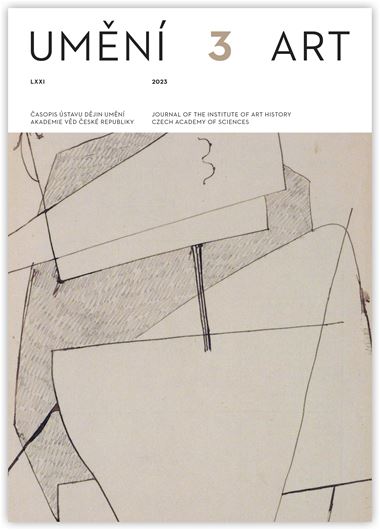Aleš Mudra
Reliefs Depicting the Virgin, Founders and Patrons from the Convent of St. George at Prague Castle
The relief in the St. George Convent at Prague Castle are of fundamental importance for the history of artistic and religious culture in the Přemyslid era. This article presents the results of a monographic study of these works, while taking into account all the relevant factors that might shed a light on their conception, creation, the origin of their creators and the models they drew on, as well as the intentions of those commissioning them, their location and function. Clues as to their original function are revealed, inter alia, through transcriptions of inscriptions and the identification of their sources and the context of their appearance, or through the deconstruction of sets of reliefs and an examination of alternatives to the original identification of place and date of the individual parts of a set. The reliefs probably originally comprised three separate units: the archivolts created at the time of the rebuilding of the convent under Abbess Bertha as part of the exterior portal (after 1142); the relief of the Madonna shortly after the death of the Abbess as part of the altarpiece (c. 1187); and the reliefs of benefactors not long after that, following the coronation of Přemysl (Ottokar) I (1198). A stylistic and comparative analysis of the situation in question, when in Bohemia there was probably no widely based production, established workshops, training, stable inventory of artistic tasks, systematic reception of the work of important artistic centres, trends or tendencies, more than anything else reveals its own limitations. Also examined are the processes of artistic transfer, i.e. the possibility of contact with often distant cultural circles, where typological patterns and analogies of Prague reliefs occur. The iconographic and iconological analysis reveals a richly structured and layered conception of subject matter, as well as references to devotional types of image or to contemporary tendencies in religious thought. The synergy of text and image in the reliefs in the St. George Convent provides a clue as to how an image spoke, sang, evoked responses, assumed or required roles, attitudes and actions on the part of the viewers, encouraged their active participation in associated rites, and evoked theological meanings that in turn prompted meditation on the paradoxes of the faith.
Author's email:
mudra.ales@npu.cz
DOI: HTTPS://DOI.ORG/10.54759/ART-2023-0301
Full-text in the Digital Library of the Czech Academy of Sciences:
https://kramerius.lib.cas.cz/uuid/uuid:f6005ddd-a414-4205-87e7-f08fa36c2e2c
< back

